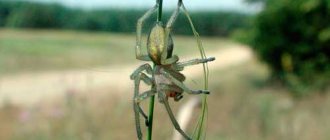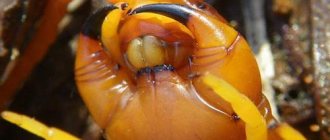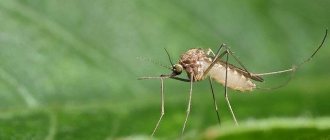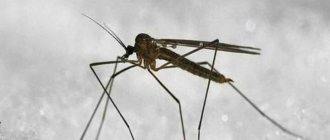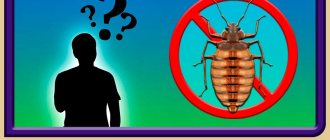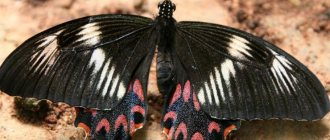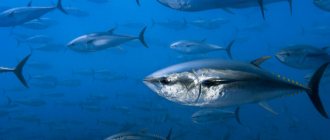There are more than 600 thousand species of insects on Earth, which are very important for maintaining balance in the ecosystem. Most of them are safe, but there are some that can cause serious harm to humans. These are the ones we will talk about in our review.
Photo: pixabay.com
Many insects have a rather unpleasant appearance and can cause a real phobia in a person, without being dangerous. However, there are other bugs that look quite harmless, but can cause irreparable harm to a person or animal. These insects are dangerous because they can:
- Be carriers of deadly diseases: plague, typhus, tick-borne encephalitis, sleeping sickness and others.
- Show aggression towards a person - bite, sting.
- Parasitize the human body.
Therefore, people should always be vigilant, especially if they are visiting exotic countries with unfamiliar flora and fauna. Typically, insects can harm humans through:
- Bite.
- Touching the skin.
- Getting poison into the oral cavity.
A person's suffering after a venomous bite can last for hours or days, and can also lead to serious consequences, including death.
We present a ranking of the most dangerous insects on the planet. The review was compiled based on data from the portal fieldandstream.com.
Rating:
- Mosquitoes
- Triatomine bugs
- Tsetse fly
- Bees
- Indian red scorpion
- Scorpions Deathstalker
- Spiders Black Widow
- Brazilian wandering spiders
- Brown Recluse Spider
- Ants
- Fleas
- Ticks
Red cockroach
These “pets” are ubiquitous, choosing to live in warm spaces near food and water. They feed on human products, and in the absence of such, they can eat paper and leather products. The red cockroach is dangerous because, moving through different areas of residential premises, including garbage cans, sewers, etc., it carries many dangerous bacteria and helminth eggs. Such a neighborhood threatens a person with the development of various diseases, including: dysentery, meningitis, salmonellosis and others.
Bed bug
Refers to insects that parasitize the body of humans and animals. Moves into living quarters to constantly be close to a power source. Bed bugs attack people mainly at night, and during the day they hide in secluded places. The bite of this tiny insect, which is difficult to see, causes unpleasant itching and can lead to allergies.
Army ants
There are a huge number of ant species in the world, and many of them are very dangerous. These include army soldier ants, which are a specialized caste of worker ants and termites. The lack of vision only makes them more dangerous, because they attack anything that has flesh and blood - a fly, an elephant or a person. These fighters move in colonies and do not build anthills, so getting in their way will be a big deal. This type of ant has a large body, reaching 3 centimeters. They are armed with powerful, long mandibles that easily rip open flesh. Having made a hole, the ants climb into the wound and continue to destroy tissue, which causes incredible pain to the victim. They were even figuratively called “living death.” A colony of such ants could chew up an elephant in a week, and that would be a lot for a person to eat in a day.
Rat flea
This type of flea poses a serious danger to people. Parasitizing mainly rats, they transmit plague bacillus, tularemia, encephalitis and other diseases from animal to animal. And rodents, in turn, easily spread the infection further, infecting humans. In rare cases, fleas bite pets and people. In addition to pain and itching at the site of the bite, a person may experience a headache, increased body temperature and other unpleasant symptoms.
3) Pliers
These small insects are also dangerous to human life and health. Ticks number about 54 thousand species of their family. Some can provoke terrible diseases, while others are deadly. Despite their miniature size, these bloodthirsty insects wait for their prey among the bushes and grass. Many people say that ticks can live on trees, but they are not able to climb to such a height. Not a single species of tick has wings or high legs for jumping. Therefore, such information about ticks is unreliable. The first type of tick crawls under the skin of the victim and feeds using this method. You cannot pull them out yourself, as his head may remain in the body. The second type of tick prefers to bite through the skin after spending a short amount of time on the body. After a bite from such a tick, a mark remains in the form of a small circle or rash. If the first type of ticks is noticeable by its presence on the body, then with the second you need to be more vigilant. After any trip to nature, you need to carefully examine your body. Symptoms of a tick bite vary greatly. The most common symptoms are: headache, chills, increased weakness, aching joints, vomiting, fever, skin rashes, tachycardia and severe itching. Follow-up diseases from tick bites: Lyme disease, tick-borne encephalitis, anaplasmosis, ehrlichiosis, babesiosis, hemorrhagic fever, typhus and tularemia. Also, any tick bite can provoke lack of air, shock, acute tachycardia and loss of consciousness.
Human louse
These small parasites that feed on human blood are of two types, depending on where they are located on the body: head and body. Head lice are practically harmless, although cohabitation with them causes considerable discomfort for people. Their bites cause irritation of the scalp, and various infections can enter through the wounds. The body louse is the main carrier of a deadly disease - epidemic typhus.
What does an elephant eat?
The insect is not selective in food; it consumes leaves, stems, and eats the fruits and roots of the plant. Depending on what the elephant beetle eats, entomologists divide insects into the following groups:
- Monophages are pests that consume strictly one type of plant.
- Oligophages are beetles that feed on garden crops that are similar in appearance.
- Polyphages are omnivores that destroy any vegetation in their path.
These features mainly determine the habitats of weevils.
Some representatives of the species can be beneficial to humans. We are talking about mass destruction of weeds. Such insects are widespread in Brazil and Australia. Several types of useful mowers were brought to Russian territory, where to this day they continue to fight against salvinia, which pollutes water bodies.
Red fire ant
The bite of these insects feels similar to a burn from a fire, which is why they were given this name. This species of ant, which originally inhabited only Brazil, was randomly introduced to different parts of the planet, where it successfully adapted and adapted to life in new conditions. The red ant venom released during a bite can cause an allergic reaction, even death.
4) Wandering Spider
Many species of spiders are dangerous to human life, but the most poisonous species is listed in the Guinness Book of Records - the “Brazilian Wandering Spider”. This representative of arthropods contains the most toxic poison in the world. Its size ranges from 15 to 16 centimeters, and its body is covered with brown-gray hair. This insect is capable of running quickly and climbing trees. It attacks a person solely for the purpose of self-defense. Any bite from a wandering spider is fatal. At the moment of a bite, its venom instantly spreads into the lymphatic system and then enters the bloodstream, which in 83-85% leads to cardiac arrest. Also, when bitten, the muscles are paralyzed and asphyxia occurs. The bite of a wandering spider itself is not very painful, but the consequences are particularly tragic. There is an antidote for its poison, so the mortality rate is currently low.
Nomadic ant
These ants lead a nomadic lifestyle. The whole big friendly family moves from place to place, the journey takes about 2 weeks. The ants make stops only so that the female lays eggs and new members of the community are born from previously formed pupae. The habitat of nomadic ants is the African continent, the countries of Asia and South America. The bite of such a nomad is fatal only to people prone to allergies. Another nuisance from these insects is that they sweep away everything in their path, including livestock.
Wohlfart fly
These insects are common in southern Europe and Russia, northern Africa and China. They belong to the gray blowflies, which are characterized by reproduction in animal corpses. It is this feature that poses a threat to domestic animals and humans, since the fly can deposit its larvae in a wound, cut, or on mucous membranes. As the larvae develop, they begin to eat living tissue and human muscles. Moving inside the body, they cause pain; swelling and suppuration appear in the place where they settled.
Giant hornet
Giant hornets live in many places in Asia: in China, India, Nepal, Korea, Japan, and even in our Primorsky Territory, such individuals have been noticed. The length of these giants can exceed 5 centimeters, they have very powerful jaws and an impressively long (6 mm) stinger, with which they can easily pierce human skin. Such an aggressive predator attacks for no particular reason, and fighting it off without outside help is very difficult. When attacking, the hornet repeatedly uses its sting, injecting a new portion of poison with each injection. It is very painful and also destroys muscle tissue. One Japanese entomologist, who was attacked by such a hornet, described its bite as the impact of a hot nail. Every year, 30-70 people die from giant hornet bites.
Cordylobia anthropophaga
Another fly whose larvae develop in the human body. This type of fly is widespread on the African continent and in Saudi Arabia. The insect lays its eggs on sand or on clothing soaked in urine or sweat, and the larvae patiently wait for their future host. Upon contact with human skin, they begin to actively screw into it, as a result of which tropical myiasis develops on the body. Thus, the larvae stay in the human body for up to 15 days, and then they emerge and go to pupate in the ground.
Megalopyge opercularis
This hairy caterpillar of one of the moth species recently began to be called Donald Trump's caterpillar, for its resemblance to his hair. But the cute and fluffy appearance of this insect is deceiving. The fur, under which the caterpillar's body is hidden, consists of hairs with poisonous spines. If a person decides to pet a caterpillar, he risks receiving a powerful toxic injection. Upon contact with human skin, the thorns dig into it and break, and the poison causes a severe burning sensation. Particularly susceptible people may experience dizziness and vomiting. These insects are common in the USA, Mexico and northern Central America.
Fat-tailed scorpion (Androctonus australis)
Scorpio is one of the oldest inhabitants of our planet. These arachnids have existed for 400 million years, and they feel great. Predators among insects, they prefer to hunt at night. Strong front claws grab and hold prey, and the tail sting injects venom into the caught insect or small animal.
Best articles: Cats with a flattened face: description of each breed, features of care
A scorpion bite is always unpleasant, but there are some whose venom is comparable to that of the most dangerous snakes. Meeting and contacting such an insect is very dangerous!
In the Middle East and northern Africa, in arid areas, there is a thick-tailed scorpion, a drop of venom of which can kill a person in 5-7 hours. This is a powerful animal, up to 10 cm long, dark brown or black in color. It bites a person most often in case of defense - when penetrating into his zone of influence.
Scorpion venom has a paralytic effect, comparable to a cobra bite. After a few hours, general muscle paralysis begins and everything can end in cardiac arrest if the antidote is not administered in time.
Gadfly
This insect is a large parasitic fly. There are more than 170 species of gadflies worldwide, of which only one will attack humans - Dermatobia hominis, which lives in Central America. It is a common misconception that gadflies bite very painfully. In fact, they have neither a mouth nor teeth, so this is simply physiologically impossible. The danger of these insects lies in their larvae, which at the initial stage develop only in the body of a person or mammal. Once in the body, the larvae begin to actively eat flesh and muscles, causing myiasis.
Rove rove
This refers to a whole family of narrow short-winged beetles (equipped with undersized wings). They are no more than 5 mm in size. Various shades of yellow-red-brown. The harm lies in the product of their secretion organs, which contains quinones - substances that cause an extremely offensive odor. And these are dyes that are not so easy to wash off. It is easier to encounter rove beetles in rotten foliage (after all, this is where they feed). And they live everywhere.
Lonomia obliqua
The caterpillar of a butterfly from the peacock eye family can be found in tropical forests, orchards and village gardens in some Latin American countries. The caterpillar's body is covered with poisonous spines that easily pierce human skin. After contact with lonomia, a toxin enters the bloodstream, reducing its clotting ability. After a short period of time, a person develops internal bleeding, hemorrhage in organs, including the brain, which can be fatal.
The most dangerous insects in Russia
Many insects can cause significant harm to health, and some can even kill. Today we will talk about those species that you should be wary of in Russia.
The video version of the article can be viewed here (the text version is continued below):
Cockroaches. There are not many species of cockroaches in Russia. Mostly there are red cockroaches (also called Prussians), less often - black cockroaches! In addition to the fact that they reproduce very quickly (a female red locust can lay up to 50 eggs at a time, and during her life she lays about 250!) and are not aesthetically pleasing in any room, be it a house or any other establishment, they also are carriers of various bacteria and parasite eggs that adhere to the legs and body of the mustachioed scoundrel! You can also catch dysentery, diphtheria and other infections and diseases thanks to them. At night, these unwanted cohabitants of Homo Sapiens can eat the skin on children’s faces and can crawl into the ears (from where only a doctor can get them out)! And if you accidentally or on purpose (who knows) swallow a cockroach, you need to remember that in its stomach you can find eggs not only of worms, but also of many other very unpleasant parasites. Russian cockroaches are of little use as survival food, and if, God forbid, you are faced with the fact that there is no other food, try to take care of thorough heat treatment.
Red cockroach.
Ants. Despite the fact that in the Russian Federation there are no such animals as the “bullet ant” (the pain from the sting of this creature is comparable to a gunshot wound) or the “24-hour ant” (the pain does not subside and remains at the same high level for 24 hours), and other most bloodthirsty representatives, our domestic ants can also pose a threat. Like cockroaches, they carry various pathogenic bacteria, which can then enter the human body and cause various diseases: typhoid fever, cholera, etc. Therefore, ants in the house are as undesirable as cockroaches! And our ants bite, too, and they can cause a lot of problems, especially for inexperienced tourists (I had experience)! Although we must not forget about the merits of ants, which save vegetation from pests.
Forest ant.
Fleas are another nasty critter that has a painful bite that you can be allergic to! They can reward us with parasites, such as tapeworms, which, living in the human body, can grow up to 70 cm in length! Can also lead to bartonellosis! You can bring a flea into your home not only through contact with animals, but also simply on the soles of your shoes in pieces of dirt, as well as on clothes. And here are some more interesting facts about fleas: one individual inflicts on average about 400 bites in 1 day, is capable of jumping to a height of one and a half meters, lives for about 1.5 years and during this time lays 500 - 2000 eggs.
Flea.
Midges or midges are the name given to very unpleasant small insects (mostly humpbacked mosquitoes) whose size is less than 5 mm, attacking not only people, but also animals. Their strength is in numbers, huddled together they will not give you peace. By biting, substances will be injected into you, causing swelling at the site of the bite, redness, itching; if the midge frolics to its fullest, other manifestations of an allergic reaction may appear, such as an increase in temperature, sometimes up to 40 degrees! You will find the most ferocious types of midges in the tundra region (they are called tundra midges or Kholodkovsky midges). Then swelling and other effects fade into the background, because you can catch plague, tularemia, and other terrible diseases.
Mosquitoes are not as harmless as they seem; many of these creatures are carriers of diseases such as malaria, dengue, yellow fever, encephalitis, Zika fever and others. Malaria alone kills about 200,000 people worldwide every year. On the territory of our Motherland there are about 10 species of malaria mosquito, they are found in the European part of our country, as well as in Western Siberia.
Mosquitoes.
Flies. There are quite a lot of different flies and they are all dangerous to us to varying degrees. They can be carriers of cholera, typhoid fever, dysentery, paratyphoid fever, etc. And house flies are also first-class carriers of worms! Flies also have positive qualities: they pollinate plants and enrich the soil, but this doesn’t make it any easier, is it necessary to go into detail about how arrogantly and annoyingly flies behave and how painful their bite can be in the fall! But in addition to diseases, other flies can cause myiases - parasitizing larvae inside the body of an animal and even a person. This occurs as a result of the laying of eggs under the skin, in the eyes, wounds, etc. In Russia, the cause of myiasis is most often the Wohlfarth fly, which lays its larvae on the skin of the victim. These small worms quickly bite into it and feed on soft tissues, causing unbearable pain to their owner. In addition, the passages made by these parasites in living tissues fester and bleed.
Wohlfart's fly.
Horseflies are terrible creatures that adore blood. There are about 200 species of horseflies in Russia. They carry many diseases, such as anthrax. In addition, the bites themselves are very painful. Biting horseflies inject anticoagulants and toxins, which slow down blood clotting, and the wounds bleed for a long time and do not heal.
Horsefly of the genus Tabanus.
Gadflies. This should not be confused with horse flies; such a misconception can be dangerous. Remember, gadflies are large, hairy flies with a large head. Their larvae live inside any living organism (humans are also suitable for this role) and eat its tissues. The gastric botfly, which usually parasitizes horses, is very dangerous, but it can also take advantage of humans. It lays its eggs in the grass or directly on the skin, from where the larvae independently make their way into the body. There have been recorded cases of gadfly worms entering the human brain, which leads to catastrophic consequences! But the botfly also lives in the Russian Federation. Its babies love to develop in the nasal and pharyngeal cavities, and the frontal cavity of ungulates. In humans, the gadfly prefers the nose, throat and eyes (which poses a risk to vision and the brain).
It is worth highlighting the most common domestic varieties of this truly terrible creature: the Russian “rhinoestrus purpureas” and the sheep gadfly “oestrus ovis”. These guys do not lay eggs in the usual sense, preferring to shoot larvae right on the fly, aiming at the nostrils or organs of vision of some sheep or Homo sapiens. If the goal is achieved and the larva gets into, for example, the eye, the eye will hurt and water, and if the parasite is not removed in time, the eye may fester. The larvae, in turn, cling tightly, and most often they can only be removed through surgery.
Oestrus ovis.
Bees are creatures worthy of respect and play a significant role in our lives, allowing us to enjoy honey! However, they can also pose a risk to people, despite the fact that they are not aggressive and only attack in defense. Bees are not only hardworking, but also dexterous, and it is not so easy to brush aside this honey plant! You need to understand that if she stings you, she herself will die, since along with the sting, which gets stuck in the body of the object of attack, the bee also loses part of its internal organs. At the same time, special substances are released that attract other bees who are ready to sacrifice themselves (for this reason, crushing honey-bearing creatures is also not recommended), and the bees live in large families! In addition to the pain from the sting, some people are hypersensitive to their venom, which can cause allergic angioedema, which can result in death. It is very undesirable for all people if the bite is applied to the tongue, pharynx or palate, because the resulting swelling can block air flow and lead to asphyxia.
After an attack, bees are recommended to take an antihistamine, remove the sting with tweezers, and apply ice. Do not scratch the stung area, you can get an infection and get skin damage! Squeezing out the sting with your fingers is also not recommended. If the person bitten suffers from allergies, it is recommended to give an injection of adrenaline, which will reduce the allergic reaction and also save life.
Bee.
Wasps are very annoying and dangerous! Especially for allergy sufferers, for whom a sting threatens death! They don't give you honey! After they sting you, they don’t die, so they can repeat the procedure again and again! They climb into bags, fly into public transport, arrange parties near fruit shops and stalls, and like to test your nerves. However, it cannot be said that wasps are completely useless; they help get rid of garden pests and flies.
Wasps.
The bumblebee is a beautiful insect and one might even say kind. It pollinates its own flowers and does not bother people. I remember how my grandfather picked up several bumblebees and they calmly crawled across his palms without biting! However, not everything is so rosy, in fact, a bumblebee bite is very painful, and in 1% of the world's population, it can also cause an anaphelactic reaction, the likelihood of which increases with a repeated attack, and if you manage to get many bites, you can even die.
Bumblebee.
Hornets can attack for no reason and cause serious allergic reactions leading to death; read about their most terrible representative below.
The Asian giant hornet is the terror of Asia and the largest hornet in the world. The length of the body is already 5 cm! Found only in the Primorsky Territory. However, with the inexorable onset of global warming, their habitat is constantly expanding. The Asian giant itself is aggressive and cruel, much more than the bees, whose heads it literally blows off with its massive jaws! Then it grinds it into biomass and brings it to your hive as food for the larvae! A hornet can kill 300 bees in an hour, and if a beehive is attacked by a small group of hornets, then about 30,000 die in an hour. The bees fight to the death and defend themselves as best they can, but if attacked by a group of these giants, they are doomed! Having killed everyone, the attackers grab honey and larvae. The only chance for bees in a fight with the enemy is to destroy the “scout” who has not yet had time to inform his relatives about the found bee hive. They do it this way: having lured the “scout” into their hive, they rush at him en masse and while he destroys the bees closest to him, the rest, vibrating with their wings, create a temperature equal to 50 degrees Celsius. At this temperature, protein compounds are destroyed. The hornet and the bees closest to it die, but the hive is saved.
Asian giant hornet.
For people, an encounter with this giant can also end in disaster, because its venom not only destroys tissue, but also contains a neurotoxin that paralyzes the nervous system, and an allergic reaction to a sting can lead to anaphylactic shock and subsequent death! In addition, the hornet's sting, which it usually inflicts at speed, is extremely painful. Those unfortunate people who have felt the intensity of pain compare the attack of a hornet to a blow from a heavy sledgehammer.
Beetles with powerful jaws. Such as ground beetles, stag beetles, longhorned beetles, swimming beetles and others are capable of biting through the skin, which can be quite painful.
Swimmer.
Poisonous bugs. In principle, they do not inject poison, so there is no need to fear that you will be poisoned through the bitten skin. However, beetles can be poisonous because their blood, the so-called hemolymph, contains toxic substances, for example, cantharidin. If this chemical compound gets into the blood or mucous membranes, everything can end badly, including death. The most concentrated hemolymph in this sense is in such beetles as ladybugs of the genus “Coccinellidae”, redwings “Lycidae”, babies “Melyridae”, soft beetles “Cantharidae” and blister beetles “Meloidae”; more about them below.
Ladybug.
The blister beetle has about 70 species and is very poisonous. The reason is cantharidin, which is contained in the body of the beetle. If this substance gets on your skin, it will undoubtedly leave abscesses and blisters on it. Once in the wound, it has a negative effect on the functioning of the urinary tract and kidneys. If it gets into the blood, death is possible! It’s no joke, in the Middle Ages many rulers were vilely poisoned by the poison of these very insects and died in terrible suffering. You can absolutely protect yourself only by eliminating all contact with blisters.
The beetle is a blister beetle.
Large ground beetles. Especially common in our country is “Carabus”, which shoots a caustic liquid from the back of the body, and quite far at a distance of 30 - 50 cm. If it gets on the skin, this liquid can cause a burning sensation, but if it gets into the eyes, it is already fraught for vision, especially if you do not immediately rinse your eyes with plenty of water.
Ground beetle.
There are other dangerous creatures covered with chitinous shells, such as ticks and spiders, that are not insects.
© SURVIVE.RU
5 2 votes
Article rating
Post Views: 55,540
Related posts:
Triatomine bug
Because of the way it bites in the area near the lips, this bug is called a kisser. Triatomine bugs live in Central and South America. This blood-sucking insect is a carrier of dangerous parasites that cause Chagas disease. After the “kiss,” a person may experience the first symptoms of the disease: fever, headache, swollen lymph nodes, and others. After a few weeks, the disease enters the chronic stage. At an early stage, it responds well to treatment, but in the absence of medical care it can lead to the death of the patient.
Caterpillar lonomia
Lonomia caterpillar
Once a year, at the beginning of summer, harmless moths living in the humid forests of South America produce offspring. They lay tiny eggs in the crowns of trees, from which larvae soon hatch. Then “lazy clowns” are born - this is what the aborigines call the most poisonous caterpillars on the planet.
Interesting: The largest animals - list, sizes, description, photos and videos
The 7 cm long creature is colored brown-green, which allows it to perfectly camouflage among plants. Features of the insect are a white spot on the back, resembling the letter U, and thin bristles covering the body. Each of them has cavities through which poison passes, destroying fibrinogen, a protein contained in human blood plasma.
The slightest touch to a dangerous creature can be fatal. Sharp thorns instantly pierce the skin, and after 12 hours signs of poisoning appear: chills, malaise and headache. Lack of medical care threatens the victim with disruption of the central nervous system, kidney damage and internal bleeding. From 10 to 30 people die annually from poisoning with lonomia toxins.
Wasp
This name unites a small group of insects from the suborder Stem-bellied. They are distributed throughout the globe, except Antarctica. Almost all wasps have a poisonous sting, which, unlike bees, does not deteriorate after the first use. A person stung by a wasp will feel a sharp pain in the place where the sting penetrated. Redness and swelling also occurs there. For people with allergies, the consequences of a bite can be more serious, even fatal.
Horsefly
These large flies live on every continent except Antarctica. Being blood-sucking, horseflies actively attack domestic animals and people. The insect's saliva contains toxic substances and anticoagulants, so the bite site in humans does not heal for a long time, and the wound may bleed. A horsefly bite causes burning pain and swelling, and in some cases can cause an acute allergic reaction. It has been scientifically proven that horseflies are carriers of dangerous diseases, including tularemia, tick-borne encephalitis, anthrax and others.
Malaria mosquito
From the name it is clear what disease this insect spreads. The existing malaria vaccine is ineffective; about 500 thousand people die from this disease every year. Mosquitoes live almost all over the globe, except Antarctica. The most dangerous species in terms of transmitting infectious diseases inhabit tropical areas. The largest number of infected people are recorded in African countries, mainly children under 5 years of age.
Bullet Ant
One of the most dangerous representatives of the ant family. It has a toxic poison in its arsenal that can’t be compared to wasp or bee poison. These ants live in large families in the tropical forests of Central and South America. The bullet ant's sting is considered the most severe on the Schmidt sting scale. A person may experience pain for 24 hours. Swelling also forms at the site of the bite, and temporary numbness of the bitten limb is possible.
Invasion of poisonous ants
- After meeting on the paths of the tropics with the largest ant in the world, a very painful memory remains. The insect was nicknamed the bullet ant for its longest sting (3.5 mm), which is longer than the body of the insect itself.
- The harvester ant from America has the most toxic poison in the world. When attacking a victim, it grabs it with its pincers to inject a copious portion of poison. The pheromones released in this case become a signal for relatives.
- American Siafu ants managed to occupy even the tropics of Asia. The bite of the most terrifying-looking insect can be fatal, especially for the youngest or oldest people.
Vespa mandarinia
It belongs to the family of true wasps, being the largest representative of the hornet genus. It lives in Asian countries and in the eastern part of Russia. Hornets attack people extremely rarely, only for the purpose of self-defense. The extremely painful bite of this insect causes swelling, redness, can provoke an allergic reaction, and, as a result, lead to death. Simultaneous bites from several individuals at once can kill even a healthy person who does not suffer from allergies.
Pogonomyrmex maricopa
An ant soaked in poison is ready to sting without warning. It will methodically bite its victim until it dies. Ants of this species live in North America. The strength of their sting on the Schmidt scale is close to maximum. It is noteworthy that when an ant deals with its victim, in addition to toxic substances, its venom releases a special alarm pheromone, notifying other members of the colony about the danger and calling on them to unite in the fight against the enemy. For a person, such an organized attack can be deadly. A bite from just 1 individual will cause severe pain, which can last up to 4 hours.
Apis mellifera scutellata
The artificially bred bee turned out to be one of the most dangerous insects. Scientists obtained this species by crossing African and some European species of bees. Due to the strength of their poison, aggressiveness and frequent attacks on people and domestic animals, they are called killer bees. They account for more than one human life. They live in the USA, South America, Brazil, annually exploring new territories. The sting of 1 bee will not lead to the death of a person, but an attack by a group of killer bees will leave no chance of salvation.
Asian shemale
In Asia you can meet a very dangerous insect - the Asian bumblebee . It is difficult not to notice because its dimensions are impressive - 5 cm in length and wingspan - 7.5 cm. With its 0.6 cm sting, the bumblebee can sting many times in a row. In terms of pain, its bite is comparable to that of having a hot iron applied to the body. In addition, the poison has a specific smell, by which other bumblebees find the same victim and attack.



